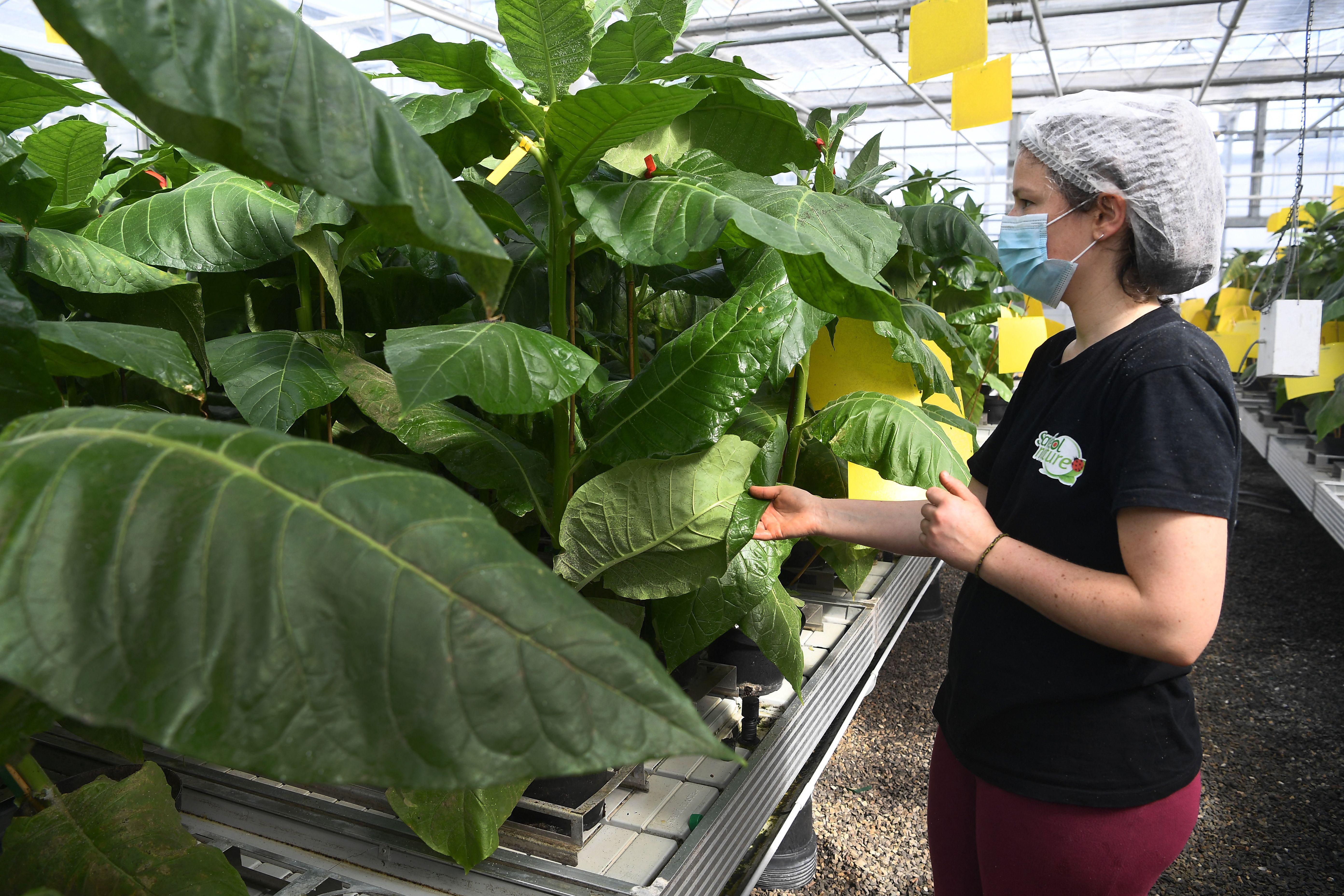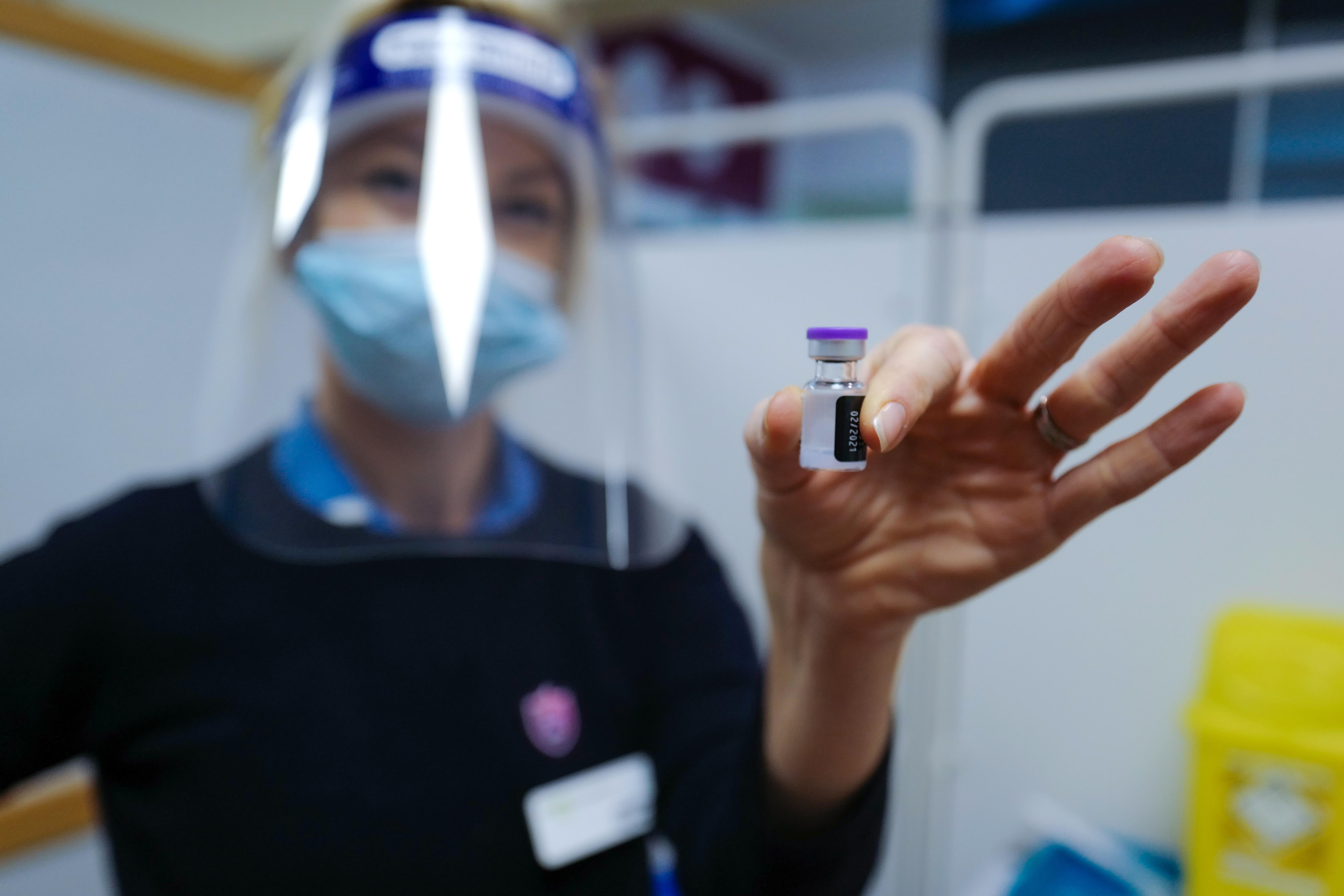How officials will ensure the COVID-19 vaccine stays cold enough in transit

Credit: Maksim Goncharenok from Pexels
- Fair distribution of the Moderna and Pfizer vaccines is especially challenging because they need to be stored at extremely cold temperatures.
- Back in 2018, the WHO reported that over half of all vaccines are wasted worldwide due to lack of cold storage, and they were only talking about vaccines that need to be chilled or kept at standard freezer temperatures.
- Real-time logistics data, location tracking, and information about movements are crucial to track shipment progress, product temperature and other conditions.
The recent good news about the Moderna and Pfizer vaccines has opened up a new set of COVID-19 challenges: how to distribute and administer the vaccine to billions of people worldwide. Successfully inventing a vaccine, it seems, is just the beginning, even if health authorities were expecting its arrival.
The fair distribution challenge is especially tricky because the vaccines need to be stored at extremely cold temperatures. The fat molecules which are the vehicle for the vaccine degrade swiftly at ambient temperatures. The Moderna vaccine needs to be kept at -4°F (-20°C), which is not much colder than the average freezer, but the Pfizer vaccine needs to be kept at -100°F (-70°C), at least until shortly before it’s due to be administered.
Pfizer has developed special insulated boxes packed with dry ice that keep the vaccine cold for up to 10 days, as long as they are unopened. The boxes can then be opened and the dry ice replenished up to three times, every five days.
Any COVID-19 vaccine will only be effective if it’s distributed widely and applied worldwide, but that includes areas with high temperatures, regions with poor infrastructure for storing the vaccine, and countries that are a long and complicated journey away from the factories where the vaccines are produced and the warehouses where they’re kept.
In light of these obstacles, Deutsche Post DHL predicts that two-thirds of the global population is unlikely to have easy access to cold chain COVID-19 vaccines.
Pharma companies, together with public health organizations worldwide, need to guarantee that the vaccine arrives safely and undamaged. That, in turn, will require accessing reliable data about whether vaccines have been compromised, so as to avoid administering useless vaccines and to increase confidence in a vaccine which already faces suspicion from the general public.
It has all the makings of a logistical nightmare.

Credit: Artem Podrez from Pexels
Ethical rules of fair distribution dictate that those who receive the first vaccines should be people who need it most, not the richest or most conveniently located. In the case of COVID-19, this includes healthcare workers, people who are elderly, immunocompromised or disabled, plus vulnerable populations on the poverty line, in prison, or in homeless shelters.
This is easier said than done. Regional health care facilities are often located several hours from the nearest transportation hub city. Many American nursing homes are high-risk locations but are geographically isolated in rural areas, and some of the poorest communities are scattered across rural counties.
“Rural midwestern states are current hot spots for COVID-19 infections, and those numbers will only worsen as temperatures continue to drop,” said William A Haseltine, a former professor at the Harvard School of Public Health. “Getting vaccines to rural Americans in these states is imperative, but damaging some vaccines in transit seems more of a likelihood than a possibility.”
Additionally, many of the world’s most vulnerable populations cannot afford to pay for COVID-19 vaccines, which means public health bodies, which have already run-down budgets during the pandemic, will have to bear the brunt of the costs.
The same hurdles apply to poorer nations with low or non-existent health budgets, which still deserve an equal supply of the vaccine. Once Pfizer’s “cold boxes” are opened, thousands of injections will need to be administered, even in sparsely populated areas, in order to ensure nothing goes to waste, and four weeks later, the process will need to be repeated for a second dose.
Public health organizations can’t afford to waste vaccines, but they also can’t afford expensive storage solutions. Deep freezers that can store the vaccine at -80°F or lower are too expensive for rural hospitals, plus the U.S. is facing a shortage of such freezers, even as manufacturers are scrambling to speed up production and shipment carriers scramble to outfit their containers.
“In this financial environment, you can imagine that there is simply no consideration of rural hospitals purchasing storage equipment for this ultra-cold distribution,” noted National Rural Health Association CEO Alan Morgan.
Back in 2018, the WHO reported that over half of all vaccines are wasted worldwide due to lack of cold storage, and they were only talking about vaccines that need to be chilled or kept at standard freezer temperatures.
Few states in the U.S. are equipped to meet the cold chain challenge. Washington State’s health department doesn’t have a way to store Pfizer vaccine at a cold enough temperature. Many newer EU member states are in a similar position, along with much of South America, Africa, and Asia. States such as Arizona, North Dakota, and Oregon include large rural communities, tribal lands, and migrant communities, none of whom are easily reachable.
If public health bodies are unable to store the vaccine for longer periods of time, the onus rests on cold chain logistics to deliver it within a shorter period of time.
Shipping companies need the ability to transport vaccine batches swiftly, with transparent tracking, to their final destinations, if they’re going to be trusted to supply rural and hard-to-reach areas.
“Cold chain logistics isn’t just a matter of profit and loss. It can mean the difference between life and death for communities and individuals who are relying on vaccines and pharma products to arrive in their original condition,” explained Janne Juhala, CEO of Logmore, via email. A supply chain condition analytics company, Logmore is launching a new product, Logmore Dry Ice, to help efforts to protect the COVID-19 vaccine in transit.
Real-time logistics data, location tracking, and information about movements are crucial to track shipment progress, product temperature and other conditions. For example, transport companies need to know if a shipment has been exposed to the sun, or get alerts to change the dry ice.
Pharma companies require this data so they can quickly rescue delayed vaccine shipments before they spoil, while accurate notifications that a shipment has been compromised enables public health authorities to rely on the integrity of the vaccine.

Credit: Artem Podrez from Pexels
At first glance, the outlook is bleak. The International Air Cargo Association (TIACA) and Pharma.Aero, a cross-industry consortium focused on reliable end-to-end air transportation for pharmaceutical shippers, surveyed airlines, freight forwarders, ground handlers, airport operators and solution providers about their preparedness for vaccine distribution, and found that only 28 percent are prepared.
The good news is that everyone involved is working flat-out to change that statistic. Air freight companies are converting passenger planes to cargo-only, increasing air transport capacity by 25 percent to 50 percent over the last six months.
Logistics companies are buying freezers as fast as possible and manufacturers are speeding up freezer production. UPS announced construction of a “freezer farm” in Louisville, Kentucky; FedEx already invested in freezers during the 2009 H1N1 pandemic; and Kuehne + Nagel International AG, a Switzerland-based warehousing and distribution company, has established coolers at 230+ distribution sites.
Another concern is the global shortage of dry ice needed to keep the vaccines cool. Dry ice is made from CO2, a by-product of ethanol production, which dropped in line with gasoline consumption due to stay-at-home orders. But delivery companies are preparing for that too; FedEx has installed dry ice machines, and UPS is considering adding them.
Private logistics companies can only take us so far, though.
Global planning and cooperation is vital to plan the timing of vaccine shipments, so that they are not ruined by air or land freight delays; ensure they aren’t held up by needless paperwork in a transit country; and protect vaccines from being seized and redirected.
“The partners have to collaborate,” said Detlef Trefzger, CEO of global shipping concern Kuehne + Nagel. “If you don’t… you might run into a capacity shortage or equipment shortage.”
TIACA and Pharma.aero called for air cargo stakeholders to collaborate to map storage capabilities and accelerate roll out of digital tracking and monitoring systems, and on governments, customs authorities, and border agencies to remove barriers to movement of COVID-19 vaccines. International organizations also need to work together to build cold chain capacity in developing countries.
Logmore’s Juhala echoed this sentiment. “Logistics companies can only take matters so far. With the COVID vaccine specifically, the world is relying on effective communication with government bodies and public health organizations,” he said, “so having verifiable data about the conditions of each shipment adds a much-needed layer of accountability.”

Credit: Maksim Goncharenok from Pexels
The obstacles in the way of COVID-19 vaccine distribution are undeniable, but everyone involved is confident that they can be overcome.
Amy Maxmen, who covered the Ebola pandemic for Nature, pointed out that in 2018 the Democratic Republic of Congo distributed the Ebola vaccine even though it too required deep cold storage.
Although the coronavirus vaccines that have passed trial so far need specific and precise storage conditions, and many of those who need it most are difficult to reach, logistics companies and public health bodies are gearing up together to make it happen. With vigilant monitoring, investment in freight infrastructure and careful strategic planning, we just might see the end of COVID-19 in 2021.





